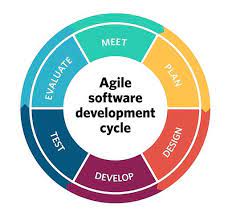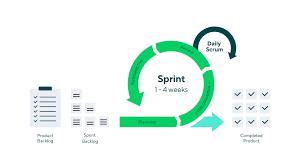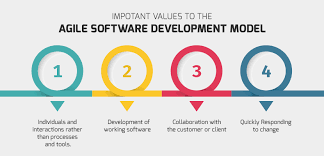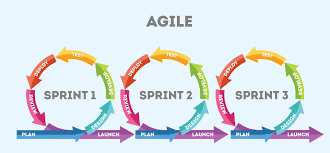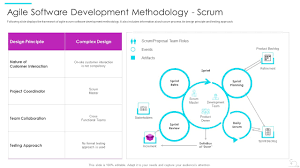Empowering Innovation: The Agile Software Development Company Advantage
The Advantages of Partnering with an Agile Software Development Company
Agile software development has revolutionized the way companies approach building and delivering software solutions. By embracing an agile methodology, companies can adapt to changing requirements, improve collaboration, and deliver high-quality products efficiently. Partnering with an agile software development company can bring numerous benefits to your organization.
Rapid Response to Changes
One of the key advantages of working with an agile software development company is the ability to respond quickly to changes in requirements or market conditions. Agile methodologies emphasize flexibility and iterative development, allowing for continuous feedback and adjustments throughout the project lifecycle. This ensures that your software solution remains aligned with your business goals and can adapt to evolving needs.
Improved Collaboration and Communication
Agile methodologies promote close collaboration between developers, designers, and stakeholders throughout the development process. By working in cross-functional teams and holding regular meetings such as daily stand-ups and sprint reviews, agile software development companies foster a culture of transparency and communication. This leads to better alignment on project goals, faster issue resolution, and improved decision-making.
Enhanced Product Quality
By breaking down projects into smaller increments called sprints and focusing on delivering working software at the end of each iteration, agile software development companies ensure that quality is built into the product from the start. Continuous testing, feedback loops, and regular demonstrations help identify issues early on and address them promptly. This results in higher-quality products that meet user expectations and deliver value.
Increased Efficiency and Time-to-Market
The iterative nature of agile software development enables companies to deliver functional software quickly and frequently. By prioritizing features based on business value and customer feedback, agile teams can focus on delivering the most important functionalities first. This approach accelerates time-to-market, allowing companies to gain a competitive edge by releasing products faster while maintaining high standards of quality.
Conclusion
In today’s fast-paced business environment, partnering with an agile software development company can help organizations stay ahead of the curve by fostering adaptability, collaboration, quality, efficiency, and speed-to-market. By embracing agile methodologies, companies can navigate complex projects more effectively and achieve success in a dynamic digital landscape.
Top 5 Benefits of Agile Software Development: Adaptability, Collaboration, Quality, Efficiency, and Speed
- Adaptability to changing requirements
- Enhanced collaboration and communication
- Focus on delivering high-quality products
- Increased efficiency in project delivery
- Faster time-to-market for software solutions
Challenges in Agile Software Development: Navigating Uncertainty, Scope Creep, and Communication Barriers
- Uncertainty in project timelines due to iterative nature of agile development.
- Potential for scope creep as requirements may evolve throughout the project.
- Dependency on constant collaboration and communication, which can be challenging in distributed teams.
Adaptability to changing requirements
One of the key advantages of partnering with an agile software development company is its adaptability to changing requirements. Agile methodologies empower teams to respond quickly and effectively to evolving project needs, market dynamics, and stakeholder feedback. By embracing a flexible and iterative approach to development, agile software development companies can adjust priorities, modify features, and incorporate new insights seamlessly throughout the project lifecycle. This adaptability ensures that the final product meets the latest requirements and delivers maximum value to clients and end-users.
Enhanced collaboration and communication
Enhanced collaboration and communication are key benefits of partnering with an agile software development company. By promoting close interaction among team members, stakeholders, and clients, agile methodologies create a transparent and communicative environment that fosters better understanding, alignment on project goals, and effective decision-making. Regular meetings, such as daily stand-ups and sprint reviews, facilitate real-time feedback exchange, ensuring that everyone is on the same page and working towards a common vision. This collaborative approach not only improves the quality of the end product but also enhances team productivity and morale by encouraging open communication and teamwork.
Focus on delivering high-quality products
An essential advantage of partnering with an agile software development company is its unwavering focus on delivering high-quality products. By emphasizing continuous testing, feedback loops, and iterative development processes, agile teams ensure that quality is prioritized at every stage of the project. This commitment to excellence results in software solutions that meet user expectations, provide value to stakeholders, and ultimately contribute to the success of the organization.
Increased efficiency in project delivery
One of the key advantages of partnering with an agile software development company is the increased efficiency in project delivery. By breaking down projects into manageable increments and focusing on delivering working software iteratively, agile teams can streamline the development process and accelerate project timelines. Prioritizing features based on business value and customer feedback allows for a more efficient allocation of resources, leading to quicker delivery of high-quality products. This approach not only enhances productivity but also enables companies to respond promptly to changing requirements, ultimately improving overall project efficiency and success rates.
Faster time-to-market for software solutions
An agile software development company excels in delivering faster time-to-market for software solutions by breaking down projects into iterative sprints and focusing on delivering functional software increments quickly. By prioritizing features based on business value and customer feedback, agile teams can accelerate the development process and release products to market sooner while maintaining high standards of quality. This approach not only helps companies stay competitive but also enables them to respond swiftly to changing market demands and gain a strategic advantage in delivering innovative solutions efficiently.
Uncertainty in project timelines due to iterative nature of agile development.
One significant drawback of partnering with an agile software development company is the uncertainty in project timelines caused by the iterative nature of agile development. Unlike traditional waterfall methodologies that follow a linear sequence of phases with predefined timelines, agile projects involve continuous feedback and adjustments, making it challenging to predict exact delivery dates. This uncertainty can pose challenges for project planning and resource allocation, especially when stakeholders require clear deadlines for budgeting and scheduling purposes. While the flexibility of agile allows for adapting to changes, the lack of fixed timelines can sometimes lead to difficulties in setting expectations and managing project progress effectively.
Potential for scope creep as requirements may evolve throughout the project.
One significant drawback of partnering with an agile software development company is the potential for scope creep as project requirements evolve. While agile methodologies emphasize flexibility and responsiveness to change, this fluidity can sometimes lead to an expansion of project scope beyond the initial plan. As stakeholders provide feedback and new insights emerge during the development process, there is a risk of continuously adding new features or functionalities, potentially impacting project timelines and budgets. Managing scope creep effectively requires clear communication, prioritization of requirements, and diligent monitoring to ensure that the project remains on track while accommodating necessary changes.
Dependency on constant collaboration and communication, which can be challenging in distributed teams.
One significant challenge of partnering with an agile software development company is the dependency on constant collaboration and communication, which can be particularly difficult to maintain in distributed teams. In a distributed setup, team members may be located in different time zones, making real-time communication and coordination more challenging. This can lead to delays in decision-making, misunderstandings due to lack of face-to-face interaction, and difficulties in maintaining a cohesive team dynamic. Overcoming these communication barriers requires careful planning, effective tools for remote collaboration, and a strong emphasis on building trust and rapport among team members despite physical distance.






